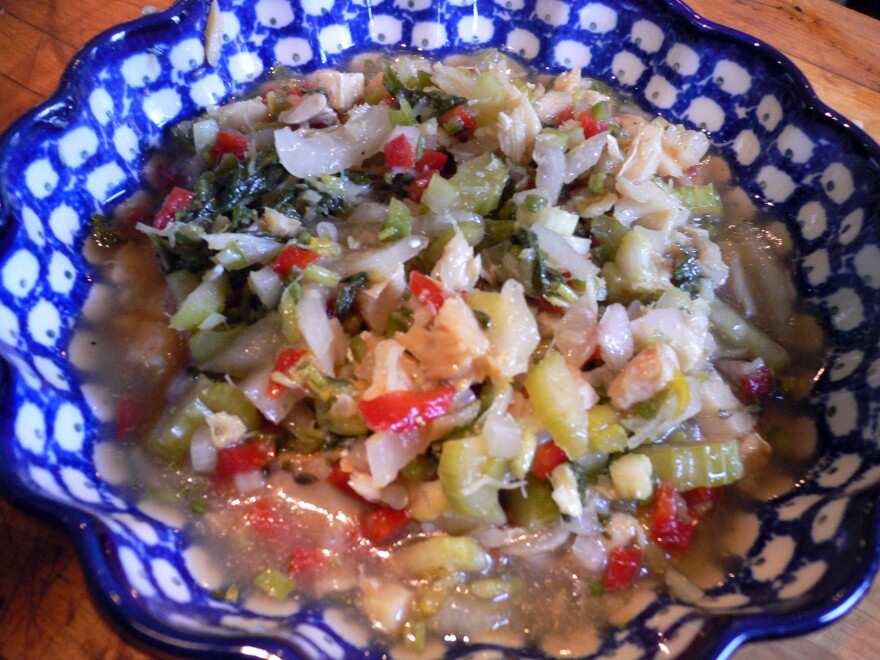I'm very familiar with Chef Jerry Pellegrino's penchant for pickling late season produce to keep it available for the cold winter months. But on the many cooking shows we watch; you always see competing chefs whipping up a pickle in just seconds... or so it seems. So, I asked Jerry to tell me how is pickling for the table different?
First, let's remember that pickling for preserving is not only a cooking process, but a canning process as well. The thing you'll learn about very quickly is cleanliness: pickling means keeping bad bacteria out and letting only the desirable bacteria do their work. Thus, there is a lot of boiling of jars, lids, and seals plus a lot of handwashing.
Pickling to preserve is a time-consuming process. Since fermentation is often involved, days, if not weeks, are required to achieve maturity. And then the intention is to put up the jars of pickled food for use during the winter.
But there are two more approaches to putting pickled vegetables or fruit on the table. Quick pickles, also know as refrigerator pickles don't require canning and can be ready to eat in just a few days. A typical liquid would be equal parts vinegar (your choice) and water, plus salt and sugar. Just about anything goes for additional flavors from things like fresh or ground herbs and spices, to garlic, onion, or shallot, to all the kinds of peppercorns out there, ground up nicely.
One simply prepares the food in question for pickling: it can be left whole or cut up, sliced, diced or julienned. Into a super-clean bowl or jar it goes. Bring the brine to a boil and then pour it over the veg. Seal it up and straight into the fridge it goes. Give it three or four days to absorb the flavors, and you've got a nice pickle.
But back to the question of cooking shows and those amazing pickles that show up at the drop of a hat. Are they cheating, or is there a way to pickle something in just minutes?
The truth is, you can do it super quickly, but you must understand the flavor will be milder. One trick is to slice your product super thin, probably with a mandolin. Immerse your thin slices into boiling brining liquid with as many super flavorful elements you can think of. Maybe twenty minutes later, in time for plating up, your pickles will be ready.
But there is still an ever-stealthier trick: sous vide. Again, you want to slice the product thin, but you place it in a sous vide bag, pour in hot brining liquid, and
then vac it with a machine. In about ten seconds you've got your pickle which has soaked up the flavored brine like a sponge. (I'm told this is a secret, so don't tell anyone!)





